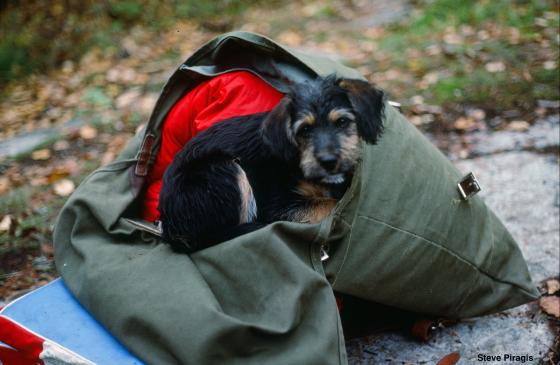Did you know that there are many ways to explore the Boundary Waters with your dog?
The search for dog-friendly adventures on public lands can be a tough one. There are good reasons for keeping pets away from many well-known natural landmarks, but many outdoor enthusiasts surely know the disappointment of realizing your dog can’t join in on that long-awaited trip.
Unlike national parks, wilderness areas are often much more open to your four-legged friend. And while regulations exist to ensure the Wilderness remains unharmed, a Boundary Waters trip is an excellent dog-friendly location!
What are the rules around bringing dogs into the BWCA?
On its Boundary Waters rules and regulations site, the U.S. Forest Service states that “dogs must be under human control at all times.” Notably, the stated rule doesn’t specify that your dog needs to be leashed in the Boundary Waters, but err on the side of caution unless your dog is well-trained and reliable off-leash. You also still need to pick up after them! Ensure that your dog's waste is disposed of at least 200 feet away from water, portages, and campsites.
Regulations change if you plan on traveling into Canada’s Quetico Provincial Park. Bring a copy of your dog’s recent vaccination records and be ready to leash up throughout the park.
What can I do in the BWCA with my dog?
The Boundary Waters’ miles of connected waterways are some of the world’s best paddling. Including your dog in your next canoe trip is, naturally, one of the best ways to enjoy the Wilderness with them! Before setting out for a multi-day trip, try a short paddle closer to home to get your dog acclimated to sitting in a canoe.
If your dog doesn’t dig canoe rides, don’t sweat it. The BWCA has an excellent system of hiking trails, and many of the best ones are dog friendly. Take a look at some of our favorite Boundary Waters hikes. Don’t forget to consider bringing your dog in the winter, as well. Local outfitters often carry harnesses that allow your dog to pull a smaller sled, or put on your skis and see if your pet has a knack for skijoring!
How do I keep my dog safe?
Bringing a dog first aid kit is highly recommended. If your dog cuts its paw on a sharp rock in the water or eats something it shouldn’t, you’ll be glad you brought one. Look for a kit with bandages, antibiotic ointment pouches, and a dose of hydrogen peroxide, which induces vomiting. Make sure your dog is well hydrated especially on hot days and while portaging. Also be sure to look for signs that your dog is stressed. Test out a night in a tent or day paddle before committing to an overnight trip so you don’t have any surprises!
For more first aid information, check out this manual from SAGE Veterinary Centers.
How can I make sure my dog isn’t impacting the Wilderness?
It’s important to consider how your dog might impact the ecosystem of the Boundary Waters. Dogs may be animals, but they are not a native species to the Quetico-Superior Ecosystem. Our pets have the same potential to damage the surrounding wildlife in unnatural ways.
Interacting with native plants and animals occurs often when hiking. Even if local regulations don’t specify an on-leash requirement, it’s good etiquette to keep your dog leashed if they’re especially reactive to wildlife or liable to wander off-trail.
Dogs who react to wildlife can impact the natural activities of the Boundary Waters’ wildlife, some of which are threatened. Startled wildlife can be more dangerous than usual, as noise-related stress can alter behavior, so do your best to limit your dog’s barking in the Wilderness.
Have you brought your dog into the Boundary Waters? Or maybe you’re looking for pet-friendly trip inspiration? Follow @BWCADogs on Instagram to share your photos with us and see how dog owners enjoy the Wilderness with their pets.
